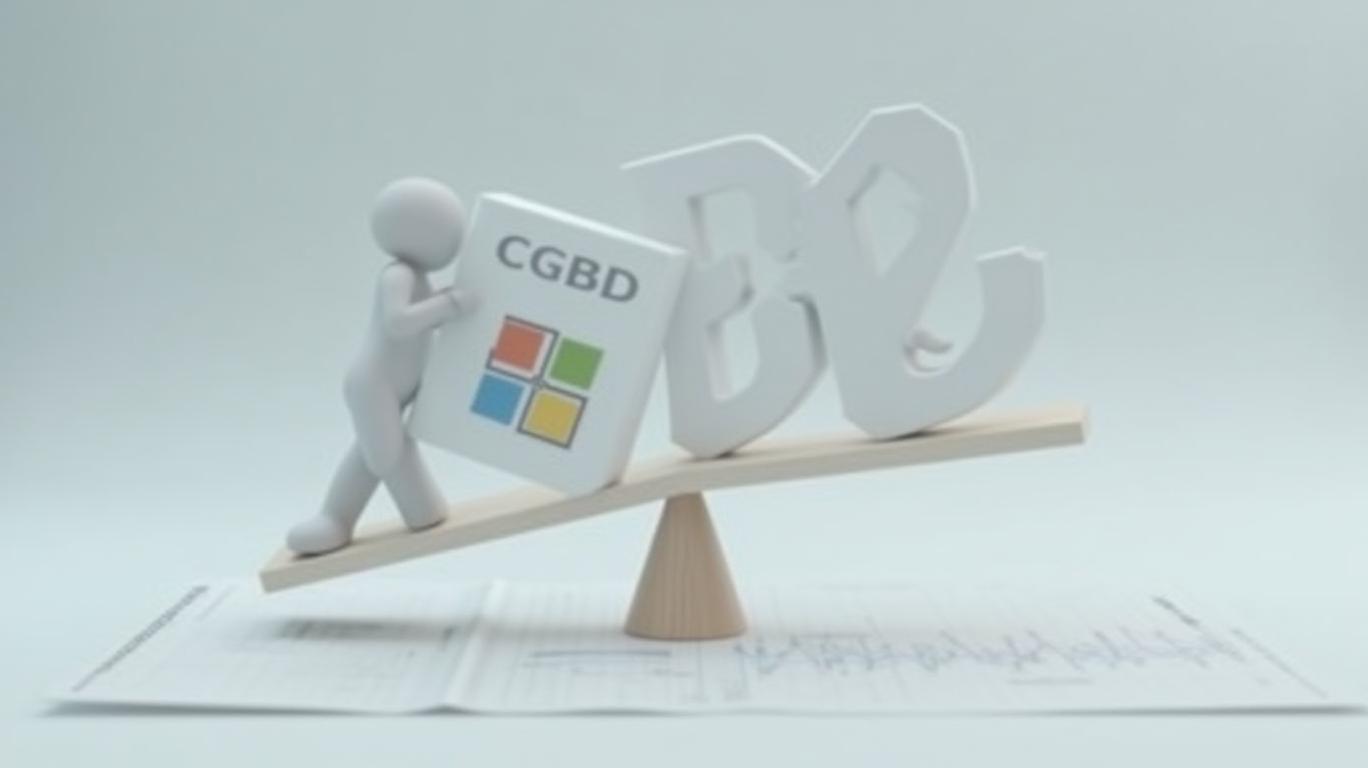The CGBD Merger: A Masked Mirage of Value?
Investors, listen up! The
Lending (CGBD) merger with CSL III might look like a slam dunk on paper—bigger assets, fewer costs, and a "resolved" overhang—but here's the catch: the math under the hood is screaming caution. Let me break down why this deal could turn into a case of buyer's remorse unless you're prepared to see your shares get diluted, your NAV shrink, and your governance safeguards crumble.
The "Fixed" Overhang: A Band-Aid on a Bullet Wound
The elimination of the $8.87 conversion price overhang—a major threat to existing shareholders—was a win. But here's the fine print: to “fix” it, Carlyle issued 19 million+ new shares to CSL III investors and converted 3 million more shares from its own preferred stock. That's a total of 22 million new shares flooding the market.
Date | Separate Account Assets YoY% | Separate Account Assets(USD) |
|---|---|---|
| 20241231 | -- | -- |
| 20250331 | -- | -- |
Name |
|---|
| Carlyle SecuredCGBD |
| Carlyle SecuredCGBD |
This isn't just a blip. A 19%+ jump in shares outstanding (assuming a pre-merger float of ~100M) could crush per-share metrics. And let's not forget—Carlyle's affiliate now holds a chunk of those new shares under a tiered lock-up. That's great for them, but what happens when those shares unlock? Institutional investors might start selling, pressuring the stock.
NAV Erosion: The $5M Elephant in the Room
The merger's $5 million in absorbed costs aren't just a one-time hit. NAV per share is the lifeblood of BDCs like CGBD, and every dollar of expense eats into it. Let's do the math:
- Pre-merger NAV per share was ~$10.
- $5M in costs spread over ~100M shares pre-dilution = $0.05 per share erosion—and that's before the new shares dilute it further.
Add rising interest rates, which could pressure loan yields, and you've got a perfect storm. Carlyle's sponsorship might cover some costs now, but when the Fed hikes rates again, will they keep bailing out the ship?
Governance Flaws: Trusting the Sponsor's Life Raft
The merger's special committees and lock-ups look reassuring, but here's the kicker: Carlyle controls the sponsor support tap. If they pull back, CGBD's NAV could sink fast.
- Conflict of Interest Alert: Carlyle's own funds benefit from the merged entity's scale. Are they prioritizing their interests over yours?
- Institutional Skepticism Rising: Big funds are already dumping BDCs in a rising-rate environment. Why? NAV volatility and governance doubts. CGBD's reliance on sponsor “generosity” won't hold if investors bail.
Scale vs. Execution: A High-Stakes Gamble
The merger boosted assets to $2.8B, which should mean economies of scale. But here's the rub:
- Cost Savings? Maybe. The promised $2.5M in annual savings are tiny compared to a $2.8B portfolio.
- Debt Market Access: The company claims better institutional access, but if NAV slips, lenders might demand higher rates or tighter terms.
Meanwhile, the middle-market lending space is getting crowded. CGBD's 90% senior loan focus is safe, but execution in a volatile environment could crater returns.
The Bottom Line: Proceed With Extreme Caution
The CGBD merger is a classic “buy the rumor, sell the news” scenario. The stock might pop initially, but here's why to think twice:
- Dilution Math: 22M new shares = lower earnings per share.
- NAV Drag: Costs + rates = downward pressure.
- Governance Risks: Sponsor support isn't a forever deal.
Action Plan: Stay on the sidelines until you see:
- A sustained NAV premium (not a fleeting bounce).
- Evidence that the new shares won't flood the market post-lockup.
- A plan to offset rising-rate pressures without sponsor bailouts.
This isn't a “buy now” story—it's a “wait and see” warning. Carlyle's move might look bold, but the devil's in the diluted details.
Final Take: CGBD's merger is a high-wire act. Investors, don't mistake scale for safety. The risks here are real—and the rewards? Still unproven.

Comments
No comments yet